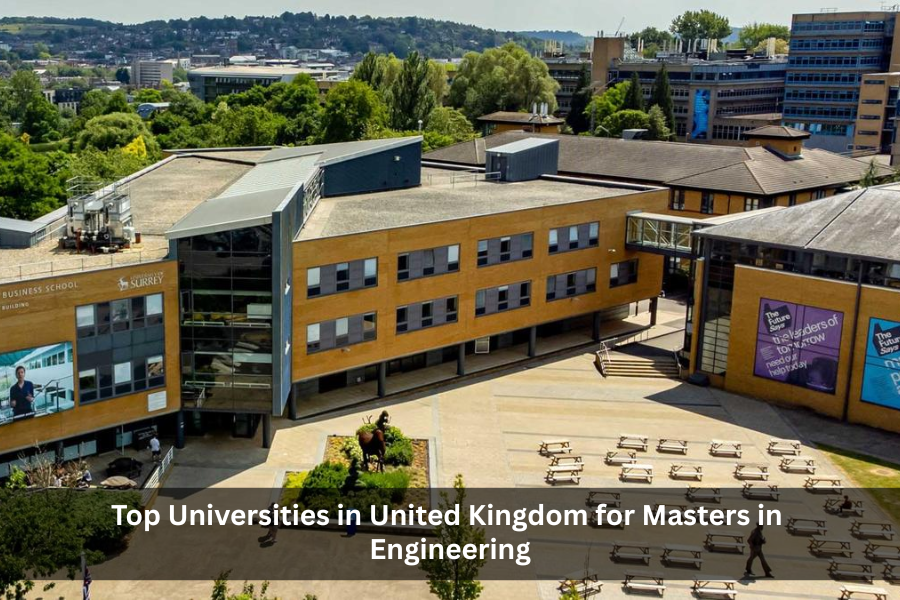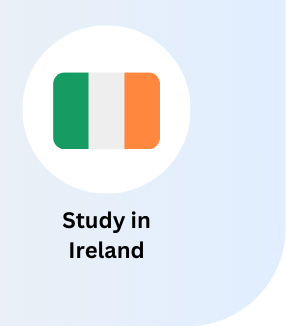
United Kingdom is a top choice for MS in Engineering applicants, offering renowned universities, diverse campuses, and excellent post-study work options. Its high quality of life and career opportunities make it an ideal study destination.
Here is the list of 5 Best MS in Engineering Universities in United Kingdom along with details of their course duration, fee, eligibility requirements and more:
1. Cranfield University (United Kingdom)
Cranfield University is a British postgraduate public research university specializing in science, engineering, design, technology, and management. Cranfield was founded as the College of Aeronautics (CoA) in 1946. Through the 1950s and 1960s, the development of aircraft research led to growth and diversification into other areas such as manufacturing and management, and in 1967, to the founding of the Cranfield School of Management. In 1969, the College of Aeronautics has renamed the Cranfield Institute of Technology, was incorporated by royal charter, gained degree awarding powers, and became a university. In 1993, it adopted its current name. Cranfield University has two campuses: the main campus is at Cranfield, Bedfordshire, and the second is at the Defence Academy of the United Kingdom at Shrivenham, southwest Oxfordshire. The main campus is unique In the United Kingdom (and Europe) for having its own airport – Cranfield Airport – and its own aircraft, used for teaching and research.
MSc in Advanced Mechanical Engineering at Cranfield University’s School of Water, Energy and Environment (United Kingdom) is a one-year STEM-designated program, with living expenses estimated at GBP 19,200, and tuition fees of GBP 12,500 for domestic students and GBP 27,900 for international students.
2. University Of Surrey (United Kingdom)
The University of Surrey is a public research university in Guildford, Surrey, England. The university received its royal charter in 1966, along with a number of other institutions following recommendations in the Robbins Report. The institution was previously known as Battersea College of Technology and was located in Battersea Park, London. Its roots, however, go back to Battersea Polytechnic Institute, founded in 1891 to provide further and higher education in London, including its poorer inhabitants.
The university is a member of the Association of MBAs and is one of four universities in the University Global Partnership Network. It is also part of the SETsquared partnership along with the University of Bath, the University of Bristol, the University of Southampton, and the University of Exeter. The university’s main campus is on Stag Hill, close to the center of Guildford and adjacent to Guildford Cathedral. Surrey Sports Park is situated at the nearby Manor Park, the university’s secondary campus. Among British universities, the University of Surrey had the 41st-highest average UCAS Tariff for new entrants in 2020.
MSc in Advanced Mechanical Engineering at the University of Surrey’s Faculty of Engineering and Physical Sciences is a 1-year STEM-designated program, with tuition fees of GBP 10,900 for domestic students and GBP 23,900 for international students, plus estimated living expenses of GBP 16,000.
3. University of Aberdeen (United Kingdom)
The University of Aberdeen (Scots: University o’ ‘Aiberdeen; abbreviated as Aberd. in post-nominals; Scottish Gaelic: Oilthigh Obar Dheathain) is a public research university in Aberdeen, Scotland. It is an ancient university founded in 1495 when William Elphinstone, Bishop of Aberdeen and Chancellor of Scotland, petitioned Pope Alexander VI on behalf of James IV, King of Scots to establish King’s College, making it Scotland’s third-oldest university and the fifth-oldest in the English-speaking world. Aberdeen is consistently ranked among the top 160 universities in the world and is ranked within the top 20 universities in the United Kingdom according to The Guardian, The Times and The Sunday Times.
MSc in Advanced Mechanical Engineering at the University of Aberdeen, UK, is a one-year STEM-designated program offered by the School of Engineering, with tuition fees of GBP 11,100 ($14,097) for domestic students and GBP 26,200 for international students, plus estimated living expenses of GBP 12,800; application requirements include a degree transcript, test score report, personal statement, CV, passport, letter of recommendation, degree certificate, and an ATAS certificate.
4. University of Birmingham (United Kingdom)
The University of Birmingham (informally Birmingham University) is a public research university located in Edgbaston, Birmingham, United Kingdom. It received its royal charter in 1900 as a successor to Queen’s College, Birmingham (founded in 1825 as the Birmingham School of Medicine and Surgery), and Mason Science College (established in 1875 by Sir Josiah Mason), making it the first English civic or ‘red brick’ university to receive its own royal charter. It is a founding member of both the Russell Group of British research universities and the international network of research universities, Universitas 21.
Masters in Engineering (MSc) in Advanced Mechanical Engineering at the College of Engineering & Physical Sciences, University of Birmingham (United Kingdom) is a 1-year STEM-designated program with living expenses estimated at GBP 13,800. The tuition fee is GBP 11,700 (USD 14,478) for domestic students and GBP 33,500 (USD 29,400) for international students. Application requirements include a degree transcript, test score report, personal statement, letter of recommendation (LOR), curriculum vitae (CV), and proof of income/financials.
5. University of Warwick (United Kingdom)
The University of Warwick is a public research university on the outskirts of Coventry between the West Midlands and Warwickshire, England. The university was founded in 1965 as part of a government initiative to expand higher education. The Warwick Business School was established in 1967, the Warwick Law School in 1968, Warwick Manufacturing Group (WMG) in 1980, and Warwick Medical School in 2000. Warwick incorporated Coventry College of Education in 1979 and Horticulture Research International in 2004.
Warwick is organized into three faculties — Arts, Science Engineering and Medicine, and Social Sciences — within which there are 32 departments. As of 2019, Warwick has around 26,531 full-time students and 2,492 academic and research staff. Warwick Arts Centre is a multi-venue arts complex on the university’s main campus and is the largest venue of its kind in the UK, which is not in London. Warwick has an average intake of 4,950 undergraduates out of 38,071 applicants (7.7 applicants per place).
Masters in Engineering at the University of Warwick (United Kingdom) offers world-class education, industry links through the Warwick Science Park and Manufacturing Group, and a distinguished alumni network including Nobel Prize and Turing Award winners, with tuition fees of $15,621 for domestic and $29,800 for international students.
If you’re planning to study in United Kingdom, check out our comprehensive guide covering everything you need to know from top universities and popular programs to career prospects, tuition fees, cost of living, scholarships, visas, and more.
 |
 |
 |
 |
 |
 |
 |
 |
